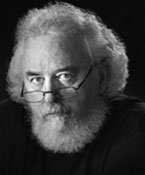Of Course, the Brain Can Change Itself. But It’s Going to Take Some Time to Figure Out How to Talk About the Fact … And Which “Facts” Are Really Facts
Before we wade into the topic that “we each create our own realities, ergo, we can each recreate the actual working materials of our brain,” you need to know a bit about my own self-created reality.
Basically, I’m a skeptic on most matters in the so-called “woo-woo” department of human inquiry, ranging from religion to UFOs to telekinesis to, yes, even the chiropractic theory. But I’m not a ragin’ Cajun on such topics. It’s true that I once refused to permit a renter of our conference center to do a firewalk because I feared liability for injury to her participants. But I also defied advice from friends in the medical community for years and chose as my personal physician a Doctor of Osteopathy over an M.D. because (1) I thought him to be a better healer than any M.D. I’d ever sought out and (2) he was a whiz at “popping” the pain out of my back with his hands-on manipulative techniques.
Thus when a dear friend insisted the other day that the wife and I just had to watch a movie called What tнe⃗ #$*! D⃗ө ωΣ (k)πow!? (also variously known as What the #$*! Do We (K)now!?, What the Bleep Do We Know! or WTFDWK?) with her because the flick had literally reordered her personal reality, my reaction was, “What the heck—why not?”
My viewing of WTFDWK? lasted approximately four minutes, and then I had to bail before I barfed. This is definitely woo-woo stuff, and in my opinion, nowhere near very good woo-woo stuff. I apologized to our friend and mumbled something about a long-standing pathological need for structure, especially in the story lines of films I’m viewing.
But then no sooner was WTFDWK? receding in my memory than another of my favorite people urged a new book on me called Evolve Your Brain: The Science of Changing Your Mind by Joe Dispenza. A quick check of Dr. Dispenza’s credentials (he’s a chiropractor) indicated that he was one of the interviewees in WTFDWK?. With that discovery, I surrendered. It appeared that God was sending me a sign that I ought to take a closer look at this, and I have.
Now, the idea that we each create our own reality is at least as old as the first onlooker to report a miracle, but it is an idea that seems to wax and wane, cycle-like, in human affairs.
If we were doing an documentary called What tнe⃗ #$*! D⃗ө ωΣ (k)πow!? and not the psycho-spiritual propaganda piece that WTFDWK? is, the story line for this latest recycling could very well begin with an invitation made by the Dalai Lama in 1992 to a Harvard-trained neuroscientist named Richard Davidson. When Davidson got a close look at the renowned Buddhist spiritual leader’s monks at the Dalai Lama’s home in Dharamsala, India, he quickly invited them to his own digs—the W.M. Keck Laboratory for Functional Brain Imaging and Behavior in Madison, WI.
Davidson was soon reporting that the Dalai’s monks, each of whom had meditated on compassion and love for more than 10,000 hours, were demonstrably and permanently altering their brain when given meditative assignments. (A control group also altered their brains—or at least their brain waves—while meditating but only temporarily.)
Davidson published his research findings in 1994 in the Proceedings of the National Academy of Sciences, and by 2006, TIME was naming him one of the ten most influential people of the year because of his research.
But research into what?
Neuroplasticity!!! That’s really what all this is about. Finally, after nearly a century, we have Santiago Ramón y Cajal on the run, Nobel Prize or no Nobel Prize. This Spanish neuroanatomist froze reality in brain research labs for much of a century with this sentence: “In the adult centers the nerve paths are something fixed, ended and immutable.” Translation: the adult brain is hardwired and not susceptible to change. Ever.
Now, we know that’s nonsense. New discoveries are being made every day of just how neuronally plastic the brain really can be. The Dalai Lama is so excited by evidence that the mind can change the brain to some extent that he’s now apparently sponsoring yearly meetings of Buddhist monks and leading neuroscientists to discuss the latest changes in neuroplasticity. The Dharamsala conferences so excited Wall Street Journal science columnist Sharon Begley that she’s now written two books on how the mind and the brain interact. Her latest—Train Your Mind, Change Your Brain: How a New Science Reveals Our Extraordinary Potential to Transform Ourselves—barely made it out before an even better book by New York research psychiatrist Dr. Norman Doidge called The Brain That Changes Itself: Stories of Personal Triumph from the Frontiers of Brain Science.”
So can the mind actually do things like “will” the brain to grow new nerve cells when old ones get damaged? The sources we consulted say the current evidence for neurogenesis is restricted to the olfactory bulb and the hippocampus. While I’m not a brain scientist or even a science writer who follows this field closely, I suspect that the field of neuroplasticity is just now taking baby steps. There are some wonderful anecdotal triumphs, as book writers like Begley and Doidge recount, often inspiringly. People with damaged inner ear nerves getting relief from dizziness. A stroke victim again able to walk. People rechanneling serious compulsive urges by actually altering their brains’ neuronal circuitry.
Throw them a little evidence, and you just had to know that the people featured in WTFDWK? would not be able to resist mixing in quantum mechanics, transcendental meditation, alternative realities, water crystals and channeling with the 35,000-year-old warrior spirit Ramtha. (Dr. Dispenza, the chiropractor, incidentally, is a teacher at Ramtha’s School of Enlightenment.)
Baby-step times are nearly always heady times. (In our Brain Technologies seminars, we usually call this the “naïve enthusiasm” stage of the discovery process.) There is absolutely nowhere near enough evidence to suggest, as a New York Times’ book reviewer (an M.D., no less!) put it, “the electronic circuits in a small lump of grayish tissue are perfectly accessible, it turns out, to any passing handyman with the right tools.” That’s simply far too great a leap to be made at this point.
And the claims made in WTFDWK?—judging from numerous reports by film watchers with less sensitive barf calibrations than mine—are even more outlandish. But this much is believable: one more time, the brain, and nature, and the reality of all realities has proven much more interesting and much less limited than we have imagined for most of history, modern scientific history included.
Go here to check out various titles on brain neuroplasticity and related topics:
By Norman Doidge The Brain That Changes Itself: Stories of Personal Triumph from the Frontiers of Brain Science
By Jeffrey M. Schwartz and Sharon Begley The Mind and the Brain: Neuroplasticity and the Power of Mental Force
By Sharon Begley Train Your Mind, Change Your Brain: How a New Science Reveals Our Extraordinary Potential to Transform Ourselves
By B. Alan Wallace Contemplative Science: Where Buddhism and Neuroscience Converge
By Joe Dispenza. Evolve Your Brain: The Science of Changing Your Mind
Wikipedia has a lengthy entry on the WTFDWK? movie: What the Bleep Do We Know!?
Here is Wikipedia’s entry on the new science of “brain malleability”: Neuroplasticity


